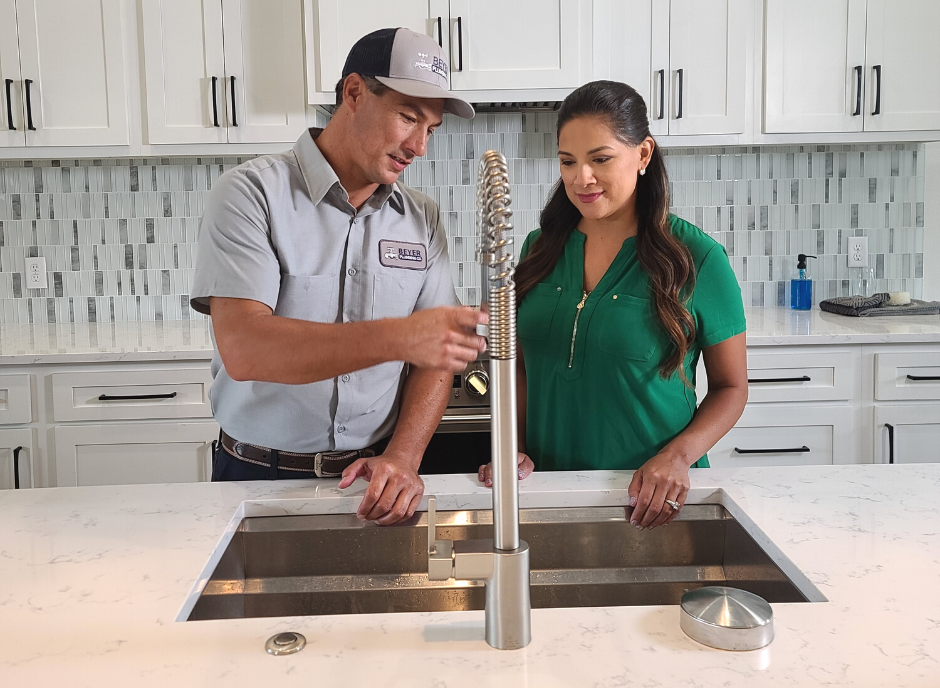What It's Significant to Fix a Broken Faucet
What It's Significant to Fix a Broken Faucet
Blog Article
In this article on the next paragraphs you can find a bunch of first-rate information and facts concerning Why Is It Important To Fix Your Leaking Tap/Faucet?.

Trickling taps could seem like a minor hassle, however their effect surpasses simply the aggravation of the audio. From drainage to sustaining unnecessary financial costs and health risks, ignoring a dripping tap can bring about numerous effects. In this post, we'll explore why it's important to address this usual house problem quickly and successfully.
Wastage of Water
Ecological Influence
Leaking taps add considerably to water wastage. According to the Epa (EPA), a solitary tap leaking at one drip per secondly can lose greater than 3,000 gallons of water per year. This not only strains water sources however additionally influences ecosystems and wild animals dependent on them.
Step-by-Step Overview to Fixing a Dripping Tap
Devices Called for
Before attempting to fix a trickling tap, collect the necessary tools, consisting of an adjustable wrench, screwdrivers, substitute components (such as washing machines or cartridges), and plumber's tape.
Common Tap Issues and Their Solutions
Recognize the sort of faucet and the particular problem triggering the drip. Typical troubles consist of damaged washing machines, rusty shutoff seats, or faulty O-rings. Refer to manufacturer instructions or online tutorials for step-by-step assistance on repair services.
Financial Expenses
Boosted Water Expenses
Beyond the environmental influence, trickling taps can pump up water bills substantially. The accumulated wastefulness gradually equates into higher energy expenses, which can have been prevented with prompt fixings.
Possible Residential Property Damage
In addition, extended dripping can bring about damage to components and surface areas surrounding the tap. Water accumulation can create staining, deterioration, and even architectural issues if left neglected, resulting in added repair expenses.
Health Issues
Mold And Mildew and Mildew Growth
The consistent presence of wetness from a trickling faucet creates a suitable environment for mold and mildew growth. These fungis not just endanger indoor air quality but likewise present health and wellness risks, especially for individuals with breathing conditions or allergies.
Waterborne Illness
Stagnant water in dripping faucets can become a breeding place for microorganisms and various other pathogens, raising the risk of waterborne conditions. Impurities such as Legionella germs flourish in stagnant water, possibly causing major illnesses when consumed or inhaled.
DIY vs. Professional Repair work
Benefits and drawbacks of DIY Repair Service
While some may attempt to repair a trickling tap themselves, do it yourself repairs come with their own set of difficulties. Without proper knowledge and tools, DIY attempts can intensify the concern or cause insufficient repair services, extending the problem.
Advantages of Hiring a Specialist Plumber
Employing a professional plumber guarantees that the underlying source of the dripping tap is dealt with successfully. Plumbing technicians possess the proficiency and devices to detect and fix tap concerns successfully, conserving time and lessening the threat of more damages.
Ecological Duty
Private Payment to Conservation
Taking duty for dealing with trickling taps straightens with more comprehensive efforts towards water preservation and ecological sustainability. Every individual's actions collectively make a substantial effect on preserving priceless resources.
Lasting Living Practices
By prioritizing punctual repair work and taking on water-saving routines, people contribute to lasting living practices that profit both existing and future generations.
Preventive Measures
Routine Upkeep Tips
To prevent leaking taps, carry out regular upkeep such as cleaning up aerators, checking for leaks, and changing worn-out parts quickly. Furthermore, think about installing water-saving gadgets or updating to a lot more reliable components.
Relevance of Prompt Services
Resolving leaking taps as soon as they're observed protects against more water wastefulness and possible damages, inevitably conserving both water and money in the long run.
Impact on Residential Property Value
Perception of Well-Maintained Residential Or Commercial Property
Maintaining a home in good condition, including resolving upkeep issues like trickling faucets, boosts its viewed value and charm among prospective buyers or occupants.
Influence on Resale Worth
Characteristics with properly maintained plumbing components, including faucets, command greater resale values in the realty market. Resolving dripping faucets can add to a favorable impression during building assessments and negotiations.
Final thought
Addressing a leaking tap exceeds plain benefit; it's a necessary step toward saving water, lowering financial expenses, and securing wellness and residential or commercial property. Whether with do it yourself fixings or professional assistance, taking action to deal with trickling taps is a tiny yet impactful means to advertise liable stewardship of sources and add to a much healthier, extra lasting future.
Why Are My Faucets Dripping (And Can I Fix it Myself)?
Causes of a Dripping or Leaking Faucet
Whether you’re hearing drops of water falling and hitting a sink, or noticing water ooze out from the base of the spout, you shouldn’t ignore a dripping or leaking faucet. And, the good news is, sometimes you can fix the problem yourself.
In this article, we’ll review a few common causes of dripping and leaky. We’ll also walk you through some basic ways to find the problem and handle it without calling anyone — and let you know when to call in a pro.
But, no matter what the cause, or whether you can handle it on your own, the sooner you address it, the better.
Each drip may be a tiny amount of water. But, they all add up quickly. According to the U.S. Geological Survey, one faucet losing one drop every 20 seconds — five a minute — wastes around a liter of water every day, and 173 gallons a year.
Add in more than one in your house, and it’s a lot of water to waste. So, we’ll help you get to the bottom of things quickly.
Four Reasons Your Faucet May Be Dripping
Aerator is Damaged or Unseated Valve Seat is Corroded O Ring is Loose or Worn Out Part of the Assembly is Loose Aerator is Damaged or Unseated
If you unscrew the end of your faucet, you’ll find the aerator. It’s the little stem piece with a screen on it that shuts off the water circulation.
If it’s damaged, or if it’s not sitting right, it will allow water to pass through.
Valve Seat is Corroded
Next is the valve seat, which is connected to the washer. If the washer wasn’t in place correctly, then it could have ground against the seat. Over time, this damages the valve seat.
The problem could also be corrosion: Over time, the part has worn out, and it’s now allowing water to pass through.
O Ring is Loose or Worn Out
Since the o ring is only a small rubber gasket, it’s a common reason why the faucet is dripping. You’ll find it at the base of the faucet, and it’s there to keep water from coming out where it’s not supposed to.
However, it’s common for the o ring to wear out over time. When it does, you’ll notice a drip.
Part of the Assembly is Loose
So far, we’ve looked at a few small, specific parts. But, the problem could be anywhere in the assembly if something’s out of place.
Even if a part isn’t damaged, over time, it may have become loose or dislodged. It could be the parts we mentioned, or the aerator at the tip of the faucet, the stem itself,
Can I Fix a Leaky Faucet Myself?
Depending on the problem, and how handy you are, there’s a chance you can fix a leaky faucet without calling a professional. But, you do run the risk of making the problem worse.
If it’s a small drip, you can certainly try a few troubleshooting tactics. We’ll walk you through them in a moment.
But, no matter what, your first step should be shutting off the water coming into the faucet. You should find a shutoff valve under the sink on the pipes leading to it. Turn each one clockwise until they close tightly.
Next, make sure you have the right tools for whatever you’re attempting. It’s tempting to make do with what you have. But, you need the right ones for a reason: You’re often dealing with small parts that can break if you handle them carelessly.
If you’re feeling confident, here are some places to start.
Items Near the Tip of the Faucet
A few of the parts we mentioned — particularly the valve seat and washer — are located at the tip of the faucet where the water comes out. They’re easy to access, making it a good place to start.
Check the O Ring
To check the o ring, you’ll need to take off the spout at the base. It’s easiest on kitchen sinks with long spouts, versus the smaller, bulkier base on most bathroom sinks.
Either way, this can be tricky, so do it carefully and don’t force anything. If it’s not coming right off, you’re much better off calling in a pro than possibly breaking something.
For a kitchen sink, there’s usually a nut or coupling assembly at the base of the spout. These often slide off easily without using any tools.
Once you’ve disassembled those parts, gently but forcefully twist off the spout.
Then, you can see the o rings. There should be two of the rubber gaskets on the base. If they look worn or damaged, replace them, and see if that solves the problem.

I recently found that post about Water Dripping from Faucet: Why and How to Fix while surfing around the internet. Those who enjoyed reading our blog posting if you please remember to share it. Thanks so much for going through it.
Report this page